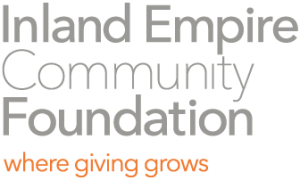 To be sure, the January 2025 Southern California wildfires have put the entire state on alert. For Rivers & Lands Conservancy, a revered nonprofit that conserves and stewards a variety of open spaces, the challenges have varied these last few months.
To be sure, the January 2025 Southern California wildfires have put the entire state on alert. For Rivers & Lands Conservancy, a revered nonprofit that conserves and stewards a variety of open spaces, the challenges have varied these last few months.
“We’ve taken a hard look at how to communicate with the community on how they can be more fire resilient, and to be a resource for them to get further information,” said Rebecca K. O’Connor, Co-Executive Director of the organization. “It’s important to be able to talk to the municipalities and be a resource to them as well.”
O’Connor said the recent wildfires gave the nonprofit an opportunity to research, connect with partners, and refine its messaging.
“We want to ensure that we’re on the same page with all of our partners and our partners are on the same page with us,” she said. “We want to know how we can help when it comes to wildfire resiliency.”
Being a land conservancy, the organization has a nexus with wildfires, but it’s not something that it typically deals with on a day-to-day basis. It has long been a champion of conserving treasured open spaces such as parks, agricultural lands, sensitive habitats, and large nature reserves interwoven with the growing cities, towns, and rural neighborhoods across southern California.
When asked how the recent fires may have shifted some of some key initiatives or messaging for the organization as it moves deeper into this year, O’Connor was candid.
“I think it’s human nature to not think the worst will happen,” she said. “We’re all told we should prepare for earthquakes. Most of us do not have enough water in our house for that or all the other necessities. We’ve always known that a firestorm was a potential, but we don’t want to believe the worst. So, I think that everyone’s thinking a little bit harder about it right now. It’s a reality to the general public, and that makes it critical for them to know where to look for the resources to prepare.”
Founded in 1989 as Riverside Land Conservancy, the private nonprofit corporation was formed to protect southern California landscapes that provide habitat and open space for wildlife and people for future generations. For more than three decades, the Conservancy has been instrumental in acquiring and preserving more than 14,500 acres of open space valued at more than $82 Million. To date, the organization holds and stewards 3,328 acres. About 14,862 total acres are conserved by Rivers & Lands Conservancy. This includes properties transferred to conservation partners.
In addition to the 2025 wildfires, federal funding has become a vital issue for many nonprofits now. With all the shifts in federal funding taking place nationally, O’Connor said that while the organization is not reliant on federal funding, it certainly affects the nonprofit to some degree.
“It affects some of our partners more deeply,” she said. “We do work a lot with federal agencies outside of the funding side of that, so it’s difficult to watch the current shakeup. We’re all a little nervous about what comes next.”
Overall, she added, the focus remains on fundraising.
“It’s a hard time to fundraise for everyone,” she added. “We’re all nervous about inflation and whether or not we’re going to have what we need to take care of ourselves, and our families let alone support another organization. These times are challenging for all, but Rivers & Lands Conservancy has been around for more than 30 years, and we have got through some really trying times, and we’ll get through these as well.”
A key focus at the moment is to make sure impacts are happening locally. To that end, signature community programs continue to stand out. Through a recent grant from IECF through the League of California Community Foundations (LCCF) Wildfire Resilience Fund – Riverside County, the organization published a helpful booklet, California Native Plants and Fire Resilient Landscaping. (Download your copy here.)
With its Wildfire Resilience initiative, for instance, the nonprofit branches out. One component is educating individuals that fire safety begins with the construction of homes and associated structures. That’s known as home hardening and defensible space.
Information for creating a Wildfire Emergency Plan is also available.
Meanwhile, a Native Plant Gardens element illuminates the importance of innovation. Created within built communities, the organization weaves a unique patchwork of micro gardens into a larger quilt of a restored habitat. It also works with community partners to beautify various public spaces.
Learn more at riversandlands.org.
This article originally appeared in the Press-Enterprise, April 2025.
Stay up to date on all the good work we’re doing through the power of philanthropy. Sign up for our eNewsletter, Philanthropy Matters, today.


